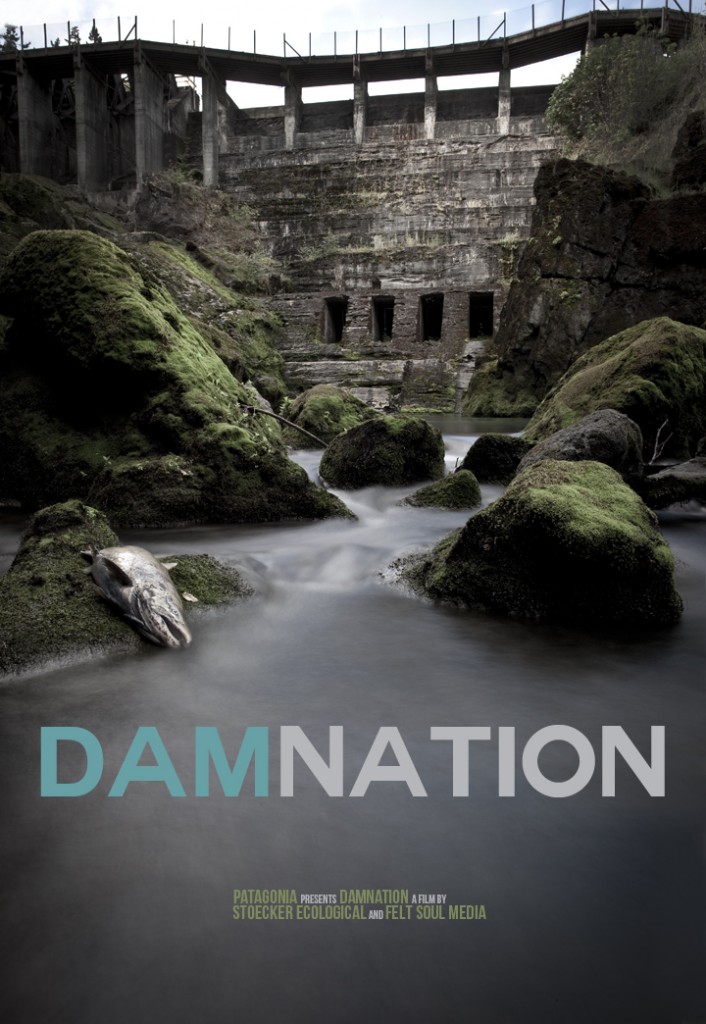Title, check. Synopsis, check.

Ok, two things: the above photo of Washington’s lower Elwha Dam was taken about six months ago. It is now GONE. Secondly, I had to look up the word “synopsis” which is probably a bad sign when you’re writing a synopsis. Oh well, don’t judge.
Ninety-nine years after Olympic National Park’s Elwha River was illegally dammed, wild Chinook salmon still instinctively gather at the foot of the lower dam as if they sense a change in the current. Upstream, the usual low rumble of antique turbines generating electricity has faded, and the piercing sound of an excavator-mounted jackhammer reverberates off the 210-foot tall Glines Canyon Dam. De-construction crews have begun the painstaking process of chipping away at its mossy, con-caved facade. This moment marks the beginning of the largest dam removal in US history, unveiling the best opportunity for wild salmon recovery in the country.
Dam removal is no longer the work of a fictional Monkey Wrench Gang. It’s real, upon us, a cornerstone of the modern environmental and cultural movements. The benefits from dams, including hydropower, urban water supply, irrigation, and flood protection have played a critical role in the development of the United States—but river ecosystems and Native American heritage suffered greatly. Now, many of these antiquated relics of the industrial revolution are classified as public safety hazards by the Army Corps of Engineers.
The short-sighted development of a bygone era is growing more prevalent—In many cases, the high cost of retrofitting an aging dam, and meeting current environmental standards has led to a surprising shift in thinking: Dam owners, impacted communities, and politicians are now reevaluating the usefulness of certain dams and often advocating for decommissioning and removal. Some call it a movement, others call it a generational shift in values. Regardless of what it’s dubbed, an undeniable momentum behind river restoration has begun.
DamNation is a collection of empassioned voices and spirited stories from the people entrenched on both sides of this devisive issue. Examining the history and controversy behind current and proposed dam removal projects, DamNation presents a dynamic perspective on Man’s attempt to harness and control the power of water at the expense of nature. Nothing lasts forever, not even the concrete monoliths that have impounded America’s free flowing rivers in the name of “progress” for ages.
—Ben Knight



Leave a comment